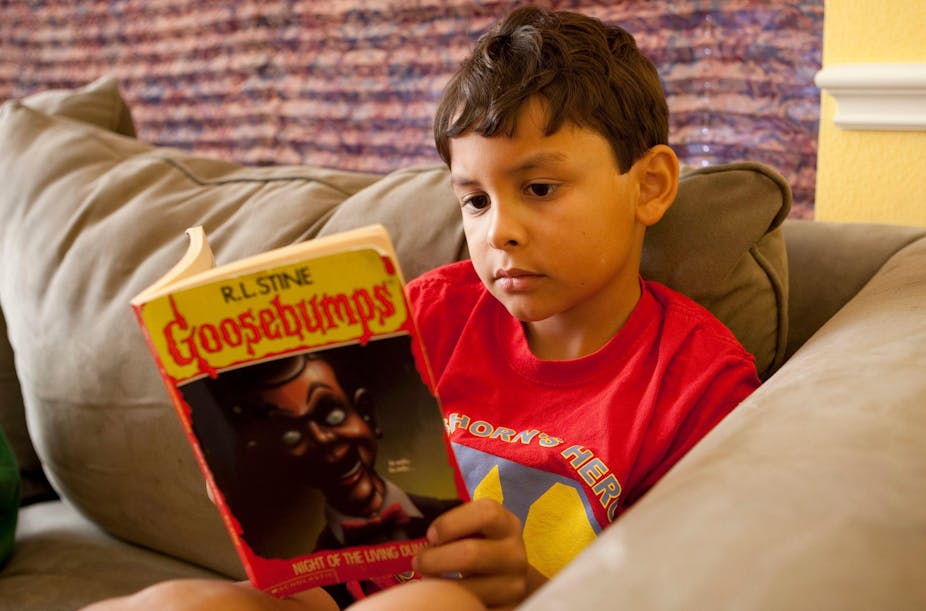The backlash to Puffin Books’ decision to update Roald Dahl’s children’s books has been swift and largely derisive. The publisher has been accused of “absurd censorship”, “corporate safetyism” and “cultural vandalism.”
At its core, however, updating Roald Dahl’s children’s books is really about the rights and control copyright grants to authors and copyright holders. Those rights are exercised to update children’s books more frequently than many of these critics may realise.
Over the past decades, authors, copyright owners and publishers have edited and updated children’s books. They have removed racial stereotypes, reflected changing gender and cultural norms and in doing so, maintained their books’ relevance and appeal to the modern reader.
Hugh Lofting’s The Story of Doctor Dolittle (1920), Dr. Seuss’s And To Think That I Saw It On Mulberry Street (1937), Helen Bannerman’s The Story of Little Black Sambo (1899), Mark Twain’s Adventures of Huckleberry Finn (1885) and classic children’s books series such as Hardy Boys and Nancy Drew have all changed to keep up with increasing sensitivities to racial, gender and other social stereotypes.
In 1973, Roald Dahl edited Charlie and the Chocolate Factory himself after the National Association for the Advancement of Colored People (NAACP) criticised the Oompa Loompas, who were originally portrayed as African “pygmies”.
Classic children’s books occupy a special cultural place and evoke sentiments of tradition and nostalgia. They are venerated as works of art, making their preservation feel vital to a shared heritage.
As such, any suggestion of changing them can feel like an attack on culture itself. Of course, whose heritage and whose culture these “classic” books represent is up for debate, especially when original versions included portrayals of certain groups in hurtful or stereotypical ways.
Read more: From pygmies to puppets: what to do with Roald Dahl's enslaved Oompa-Loompas in modern adaptations?
Some argue that books for children should be held to a higher standard of sensitivity, given that children learn about their society, identity and group membership from books. Through their books, authors and copyright holders wield the power to shape the attitudes and minds of children, teaching them notions of good, bad, ugly, pretty, who is accepted and who is excluded.
How copyright law impacted Dahl’s edits
Copyright law grants its holder the exclusive right to edit a copyrighted children’s book and the right to limit publication of a work. This means that during a book’s copyright term, the copyright holder has the right to make edits that maintain the book’s popularity and commercial viability.
This is true even when an author no longer owns the copyright to their work. In those situations, the copyright holder generally has the right to make edits to the work even without the author’s consent, as Goosebumps author R.L. Stine recently discovered.
These rights aren’t absolute and – most importantly – aren’t forever. Once the copyright term expires, anyone can reproduce, edit and sell new copies of an original book in any medium or format.
Hugh Lofting’s The Story of Doctor Dolittle (1920), for example, entered the US public domain in the 1990s. Today, both the updated and the original versions (including its racial caricatures and story line about a black prince dreaming of becoming white) are available to purchase.

Dr. Seuss’s first children’s book, And to Think That I Saw It On Mulberry Street (1937), will enter the US public domain in 2033. At that time, regardless of Dr. Seuss Enterprises’ efforts to retire that book, anyone will be able to reproduce and sell new copies, complete with its original bright yellow faced “Chinaman who eats with sticks”.
Roald Dahl’s original Charlie and The Chocolate Factory will enter the US public domain in 2060. Children will once more have the opportunity to read about the African “pygmies” that Willy Wonka “discovered” and shipped to work in his factory, “fat” children like Augustus Goop and “ugly” girls who chew gum.
In the meantime, copyright holders can update and revitalise their books to broaden their readerships, protect authors’ legacies and maintain the works’ relevance. In exchange, teachers and guardians can access various versions of classic books and decide for themselves which versions their children should read.

